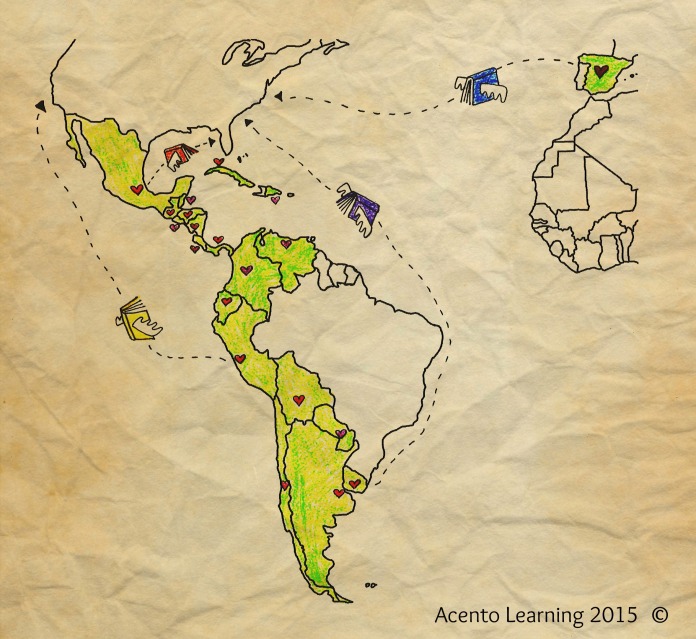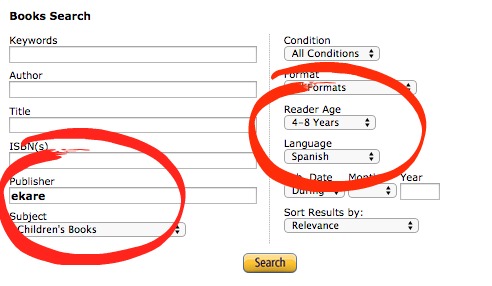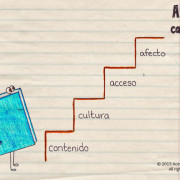Authentic Books in Spanish
In our last blog post, we discussed how to motivate children to speak in Spanish and balance the language inequity between English and Spanish in dual language programs. This time, we’ll tackle another big challenge: how to address the absence of authentic Spanish texts in our classrooms.
But first, what is an authentic book in Spanish?
To start off, it’s important to define what we mean by “authentic” in this context. We believe that beyond a book being written by a hispanic author or with traditional folklore or historic content, an authentic book in Spanish is a book that was written first in Spanish with a Spanish-speaking audience in mind.
Why are these books important for in-Spanish classrooms?
From a very technical perspective, when a book is written in the language in which it is intended to be read, the author has total freedom to use a wealth of words to fit his ideas without compromising the message of the story. For this same reason, when we write these blog posts, we write them in Spanish first. We know that Spanish is our audience’s dominant language, thus we think through the content in Spanish first to better communicate our ideas.
From a more cultural perspective, authentic texts in Spanish carry settings, expressions, slang and ideas that provide readers with a sense of place and belonging. For those of us who teach in Spanish in the US, these texts are powerful tools in supporting the cultural immersion that we want to create in our classrooms; since we cannot use our outside environment as a consistent model for Spanish language or culture. Furthermore, these books serve as windows into the cultures that we want our students to identify with and become immersed in. Either way, the acknowledgement of these cultural nuances, brought to our classrooms via authentic texts, validate and highlight the importance of Spanish in a realistic context.
So, how do we get our hands on authentic texts?
Understanding that we could go on and on about why these books are critical to our programs and inviting you to carry on providing reasons, we want to go ahead and offer a few ways in which you can satisfy this need in your classroom.
Option #1: The Big Players
In the United States, there are many book distributors that carry titles in Spanish. However, we believe that the big players in providing authentic texts in Spanish are Fondo de Cultura Económica and Lectorum. The former is a real giant in Latin America, particularly in Mexico, where one can find their enormous bookstores in almost every city. In addition, they have bookstores in Washington, DC and San Diego. You can contact their offices directly to get recommendations about authentic texts, shop from their catalog and even coordinate a books fair for your school with just Spanish books!
Option #2: Busy Bee Search
For the US market, Amazon has increased its text offerings from Hispanic publishing companies, and therefore, increased its selection of authentic books in Spanish. The challenge is how to find these books, and we say challenge because it is not an impossible task and can be easily achieved by working through Amazon’s search filters. Here is our formula:
- Once you are in the Amazon website click on “Shop by Department”and then on “Books”.
- From there, click on the option that says “Advanced Search”
- Now here is the most important step, in the book search fields, make sure that these are set: Subject: “Children’s Books”, Language: “Spanish” and select the Reader Age you are looking for. Then, under Publisher, write the name of a Hispanic publishing company. And yes, you have to go through each publisher one by one. That’s why we call refer to this option as a busy bee search! It’s pretty labor intensive!
- If you don’t know the names of any Hispanic publishers, we are offering you here two juicy lists to keep you busy for a long while: Spanish and Latin American publishing companies!
As you carry on this search, you’ll become familiar with the publishers and their products. This laborious task will get a lot quicker and you will be incredibly proud of all of your newfound knowledge about these publishers!
Option #3: Trip to the Bookstore in Latin America or Spain
Another alternative to obtain authentic texts is to reach out to family members and friends who are taking a trip to Latin America or Spain, and kindly ask to pick up authentic books at the local bookstore!
Even though, at first, this option may seem unsustainable, we know plenty of in-Spanish teachers who have made this practice a habit and currently have enormous collections of authentic texts in their classrooms.
When it comes to purchasing books for your classroom, we realize that not everything is under your control. However, in your school, before the approval of next year’s budget, make sure that the point person in charge of purchases has access to this information, and levers the purchase of authentic texts for Spanish classrooms.
We hope that these options help you fill your classroom library with authentic texts in Spanish, supporting our battle against language inequity. If you have other ideas about how to get authentic texts in your bookshelves, please share them in our comments section below y ¡que viva nuestro amor por el español!
Con cariño,








Leave a Reply
Want to join the discussion?Feel free to contribute!